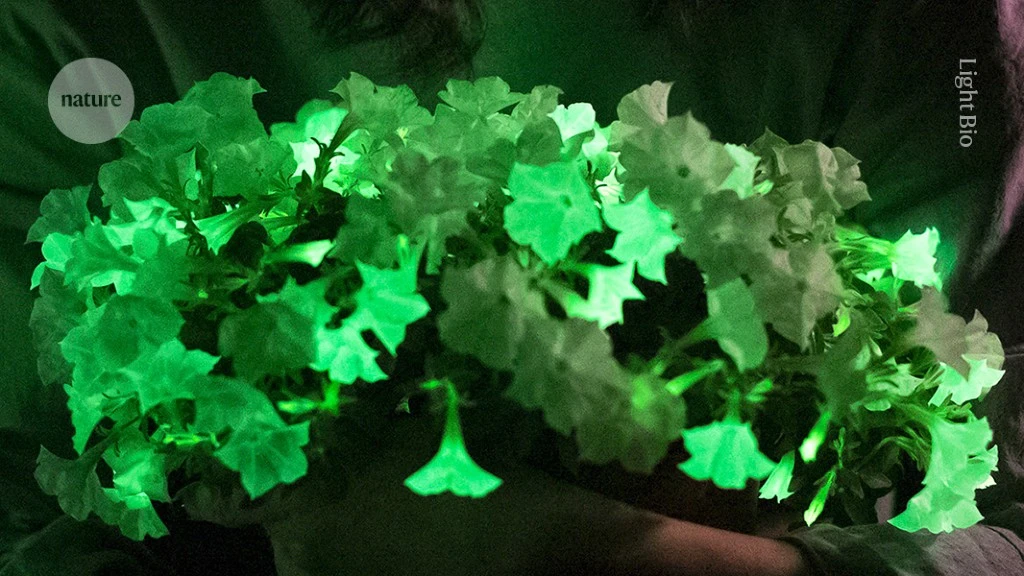Consumers in the United States can now pre-order a genetically engineered plant for their home or garden that glows continuously. At a base cost of US$29.00, residents of the 48 contiguous states can get a petunia (Petunia hybrida) with flowers that look white during the day; but, in the dark, the plant glows a faint green. Biotechnology firm Light Bio in Sun Valley, Idaho, will begin shipping a batch of 50,000 firefly petunias in April.
Engineered petunia emits a continuous green glow thanks to genes from a light-up mushroom.



Oh Luciferase, where have they put you now, my friend?